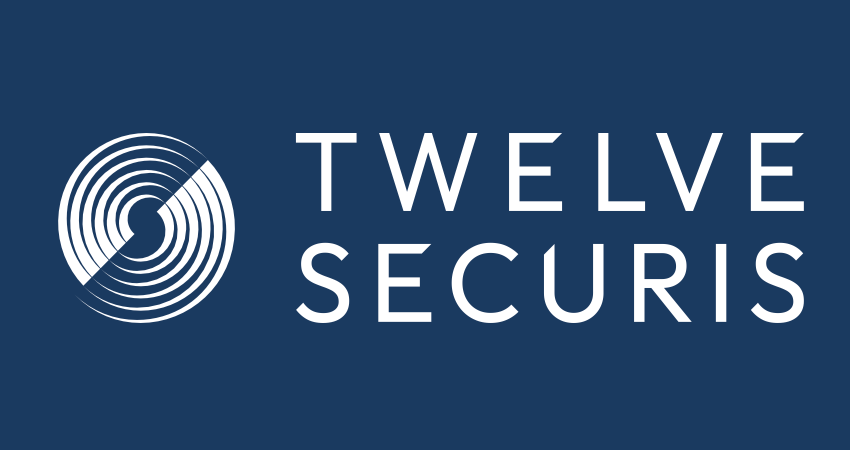Feds Sue Insurers and Brokers for Illegal Kickback Scheme
Federal prosecutors in Boston filed a 217-page complaint on May 1, 2025, in the United States District Court for Massachusetts alleging three national insurers and three major insurance brokers orchestrated a “hundreds of millions of dollars” kickback scheme targeting Medicare Advantage beneficiaries, particularly those with disabilities.
The Department of Justice named Aetna (CVS Health), Humana, and Elevance Health/Anthem as defendant insurers, along with brokers eHealth, GoHealth, and SelectQuote in the lawsuit. The complaint details violations from 2016 through 2021 in the $462 billion Medicare Advantage market, which currently serves approximately 33 million Americans.
Exceeding Compensation Caps
At the heart of the allegations: insurers allegedly circumvented Centers for Medicare and Medicaid Services-imposed broker compensation caps through “Marketing Development Funds” that rose and fell with enrollment numbers. In 2021, the national cap stood at $539 per enrollment, with renewal compensation limited to 50% of that amount.
Internal documents cited in the complaint paint a stark picture of executives acknowledging the questionable legality of their arrangements. In one particularly candid exchange, eHealth’s Derek Streich told a colleague that Humana was “paying eHealth $15M/year for a minisite that drives 15 enrollments per year. [Centers for Medicare and Medicaid Services] will surely never figure that one out… Luckily the govt are generally morons.” His colleague, William Kinkead, responded: “But [they] aren’t paying for enrollments… They are paying for the technology… Wink wink.”
Another eHealth employee, Jake Roberts, wrote that Aetna’s marketing payment model was “not even a little compliant… I’m pretty sure if Aetna got audited by [Centers for Medicare and Medicaid Services], they’d be fu[**]ed.”
The complaint alleges these payments were kickbacks designed to induce brokers to steer Medicare beneficiaries to specific insurers’ plans regardless of whether those plans best served beneficiaries’ healthcare needs.
The Steering Apparatus
The lawsuit details sophisticated steering mechanisms allegedly employed by brokers to favor carriers paying the highest kickbacks:
- GoHealth developed what it termed an “advanced call routing methodology” that prioritized calls based on insurer payments rather than beneficiary needs. During high call volume periods, the company would “determine which carriers to slow down or stop” based on maximizing cash flow.
- SelectQuote created “suppression tools” to remove competing plans from agent quote systems. The company also established “Tiburon,” a subsidiary with agents only selling plans from insurers paying the highest kickbacks without clearly informing beneficiaries of these limitations.
- eHealth implemented technology to “filter out” plans from certain carriers for beneficiaries with disabilities in states where those insurers wanted fewer disabled enrollees. Email evidence shows eHealth agreeing to “shut off another carrier to drive [Humana sales].”
- Compensation plans incentivized agents to favor certain carriers, with one Anthem contest offering $25 gift cards for “getting spotted leading your call with Anthem.” Agents who questioned these practices faced pressure, with one writing: “I am struggling with the fact that my non-Anthem [sales] are paid so much less… What does the company want? Anthem now? Or retention long term?”
Discriminating Against the Disabled
Perhaps the most troubling allegations involve systematic discrimination against Medicare beneficiaries with disabilities. Insurers allegedly tracked disabled enrollment percentages—referred to as the “Under 65 mix”—and pressured brokers to reduce these numbers.
Aetna and Humana allegedly conditioned payments to brokers based on their limiting disabled beneficiaries’ enrollments from this “Under 65 mix” because these insurers viewed this group as less profitable under Medicare’s risk-adjusted payment models. Internal communications show insurers demanding disabled enrollment below certain thresholds, with threats to withhold funds otherwise.
“The message from Craig [Uchytil, Humana executive] is if we can’t get that portion under control, we will not be able to do business with them,” one Humana executive wrote regarding a broker with “too many” disabled enrollees.
Brokers allegedly responded by implementing filters based on date of birth, routing calls from disabled beneficiaries to competitors, and creating marketing strategies specifically designed to avoid reaching disabled Medicare beneficiaries.
Insurers Paid Millions in Alleged Kickbacks
The complaint provides specific examples of the alleged kickback arrangements:
- Humana paid GoHealth approximately $64.5 million in 2019 for commitments to enroll 200,000 beneficiaries, equating to about $323 per enrollment—far exceeding the legal cap.
- Aetna paid eHealth $14.5 million in 2021, with internal spreadsheets tracking payments at $250-$400 per enrollment.
- Anthem paid GoHealth $90 million in 2020 for Medicare Advantage production, with an “underlying business agreement” for sales despite contract language referring to “calls.”
- Humana paid SelectQuote $10 million in September 2021 allegedly for “a targeted marketing campaign” and “the purchase and use of leads,” but internal communications referred to this as payment for enrollments.
The complaint details how these payments were disguised as “marketing reimbursements” while actually tracking production. As one eHealth executive explained, sponsorship dollars “goes right to the bottom line” because the money came “after the investment.”
Legal Framework and Exposure
The False Claims Act lawsuit seeks treble damages plus civil penalties up to $27,894 per false claim. Violations of the Anti-Kickback Statute carry potential felony charges, fines up to $100,000 per kickback, and program exclusion.
Every Medicare Advantage enrollment influenced by these alleged kickbacks could constitute a separate false claim, potentially creating enormous liability. The complaint includes examples of government payments ranging from approximately $746 to $79,047 per beneficiary enrollment.
Market and Regulatory Response
GoHealth’s share price slid sharply following the Department of Justice’s announcement, underscoring Wall Street’s sensitivity to Medicare Advantage enforcement actions.
The Centers for Medicare and Medicaid Services has already flagged broker compensation as a priority review item in its 2025 rulemaking docket. Industry experts anticipate state insurance departments will increase scrutiny of “development funds” that track production.
Compliance lawyers warn that contingent deals in the senior-care ecosystem will now draw Anti-Kickback Statute screening similar to physician-practice acquisitions. Private equity firms, which have heavily invested in the Medicare broker channel, face increased compliance risks.
What’s Next
The defendants must answer or move to dismiss the complaint within 60 days. Given the detailed email traffic and financial documentation already on public display, industry watchers expect parallel settlement talks to begin promptly.
Such settlements, based on past healthcare fraud settlements, could include:
- Substantial financial penalties based on the False Claims Act’s treble damages provisions
- Corporate integrity agreements with monitoring requirements
- Potential administrative actions by the Centers for Medicare and Medicaid Services
- Individual state enforcement actions through Divisions of Insurance
State regulators may initiate their own investigations based on the federal complaint. Massachusetts Division of Insurance, for example, has the authority to examine broker compensation practices and could impose penalties, license suspensions, or revocations for violations of consumer protection standards.
Insurance carriers and the brokers involved could face scrutiny beyond monetary penalties. The Department of Health and Human Services has the authority to exclude violators from Medicare participation entirely—a potential death sentence for companies heavily invested in this market.
For insurance professionals in Massachusetts and beyond, the case represents a warning: payment structures tied to production volume rather than services rendered could draw regulatory attention. As one Anthem executive remarked in an internal email cited in the complaint: “The expense is tied to the reconciliation of the ‘calls’ vs the production of sales.” Now, federal prosecutors aim to reconcile those claims with the evidence.
Qui Tam Provisions and Relator Compensation
The named relator in the lawsuit, Andrew Shea, is a former eHealth executive who stands to receive up to 30% of any settlement or judgment under the qui tam provisions of the False Claims Act.
Under the False Claims Act’s qui tam provisions, private citizens like Andrew Shea can file lawsuits on behalf of the federal government alleging fraud against government programs. These whistleblowers, known as “relators,” provide inside information about fraudulent schemes that might otherwise remain hidden. In Shea’s case, he first filed his False Claim Act suit against the Defendants in 2021, but the government did not notice its partial intervention and intent to file a complaint until January 13, 2025.
If the Department of Justice intervenes and takes over the case, as it has here, the relator stands to receive between 15% and 25% of any recovery. If the government declines to intervene and the relator successfully prosecutes the case independently, the percentage increases to between 25% and 30%.
This incentive structure has proven highly effective in uncovering healthcare fraud, with qui tam cases accounting for approximately 80% of all False Claims Act recoveries in recent years. For example, in 2012, three whistleblowers shared a $250 million reward when GlaxoSmithKline settled fraud allegations for $3 billion related to several prescription drugs.
In this case, with potential damages potentially reaching close to a billion due to treble damages and per-claim penalties, Shea’s share could be substantial.
Where do Qui Tam” Suits Come from, and Why Have They Worked?
The term “qui tam” comes from Latin and is short for the phrase “qui tam pro domino rege quam pro se ipso in hac parte sequitur,” which roughly translates to “who pursues this matter for the king as well as for himself.” This ancient legal concept dates back to 13th century England, where private citizens could bring lawsuits on behalf of the crown and receive a portion of any recovery.
In modern American law, qui tam provisions were incorporated into the False Claims Act during the Civil War to combat contractor fraud against the Union Army. The Latin terminology remains as a reminder of the public-private partnership at the heart of these whistleblower cases – the individual (relator) brings the action both on behalf of the government and themselves, sharing in any recovery while helping to protect public funds from fraud.
Today, qui tam actions have become a cornerstone of healthcare fraud enforcement, with the Justice Department recovering over $70 billion under the False Claims Act since 1986, with the majority coming from whistleblower-initiated cases.
Revisit this case on The Agency Checklists Podcast

Owen Gallagher
Insurance Coverage Legal Expert/Co-Founder & Publisher of Agency Checklists
Over the course of my legal career, I have argued a number of cases in the Massachusetts Supreme Judicial Court as well as helped agents, insurance companies, and lawmakers alike with the complexities and idiosyncrasies of insurance law in the Commonwealth.
Connect with me directly, by calling me at 617-598-3801.


